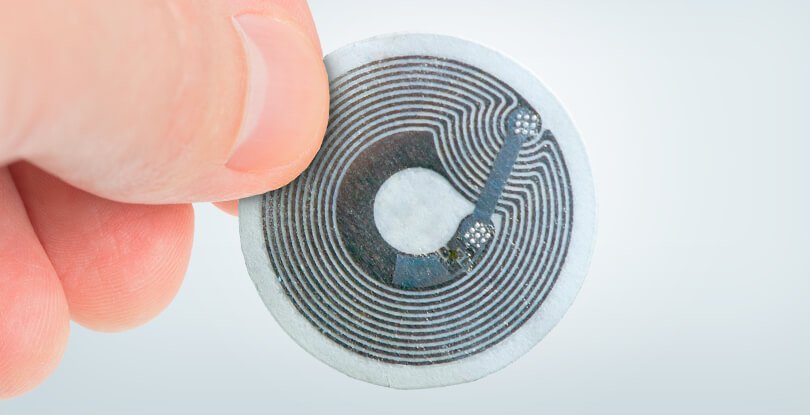What Are Printed Electronics?
Printed Electronics are an emerging technology that have grown with an increased demand for wearables and other devices. As these devices become thinner and more lightweight, the need for smaller and more flexible PCBs grows; and printed electronics are the answer. Sounds simple, but the mechanics are a bit complex. So, let’s dive in and get into the nitty gritty.
Defining printed electronics
There are several ways to define printed electronics, but the most comprehensive way to describe the technology is “electronic systems that are adhered to a variety of materials.” Instead of etching away metal to make a circuit, conductive materials such as conductive ink are placed on a substrate. The conductive ink is typically used to make a conductive trace or a simple component (like an antenna) which is printed onto Thermoplastic Polyurethanes (TPUs), polyester, or kapton.
There are two main types of conductive inks used in printed electronics: Silver or copper. And, there are also a variety of fillers used such as carbon nanotubes, graphene, and conductive polymers.
Applications
There is a litany of applications for printed electronics. This is due in part to their thin and flexible nature, and how easily they can be integrated into/onto various substrates.
Here are some of the most common applications for printed electronics:
Medical
Printed electronics have played a key role in medical wearables for several years now, and one of the earliest applications of the technology was the sensor in the glucose monitor used for at-home diabetes testing. Since then, the technology has been used in products that adhere directly to skin, bandages, and other mobile surfaces.
Medical products that utilize printed electronics:
ECG patches
Electrical stimulation systems
Surfaces in healthcare environments (utilize Aionx CleanSURFACES® technology)
Consumer products
In consumer products, printed electronics can provide great functionality to devices, control panels, and even clothing. In clothing and other wearables made for everyday wear, flexible conductive inks and thin circuits offer performance without sacrificing comfort.
Here are some examples:
Food packaging (temperature sensors)
Smartphone components and displays
Electronic labels for counterfeiting
Automotive
The automotive sector is rather new territory for printed electronics but is certainly on the rise. Printed heaters and OLED lighting are two examples of applications that are being explored by some of the industry’s largest manufacturers.
Use cases
There has been a lot of innovation in printed electronics over the years. Here are three products made with the technology that have made it successfully to market.
Transdermal Medical Patch
Image: Healthline
Nissha GSI, a pioneer in printed electronics for a wide variety of industries, has created the Transdermal Medical Patch. This patch is a wearable electronic device that uses conductive silver inks and sensors to help deliver medical data to patients. The uses for the patch range from glucose monitoring to temperature reading.
Learn more about Nissha and the Transdermal Medical Patch.
NFC tag
Image: Blue Bite
Thinfilm Electronics is a global leader in printed electronic products and was (seemingly) the first company to create the revolutionary NFC tag technology. The NFC tag is a thin plastic device that is made of small, printed electronic components. There has been a growing interest in this technology and one company, called Blue Bite, is using the tag to connect brands with consumers in a way we have never seen before.
PTC heaters
Image: Ebay
A PTC heater, according to GGI Solutions (a manufacturer of the heater), is a printed circuit system that uses “Positive Temperature Coefficient” ink to generate heat. There are no pesky wires involved, and the heater can self-regulate; which essentially wipes away all fear associated with overheating and other safety concerns.
Read more on the PTC heater
Are printed electronics an e-textile?
If you want the short answer to this question, the answer would be: No, printed electronics are not , by default, an e-textile. To clarify, printed electronics are rather a method of manufacturing an electronic system. However, printed electronics can, in some cases, be printed onto textiles, or laminated to textiles, resulting in an e-textile.
Benefits and common assumptions
There are a few key benefits and misconceptions of printed electronics, and we would like to address them.
The benefits
Cost-Effective - Unlike most electronics, printed electronics can be a low-cost option. The production process is less complex and requires fewer materials than traditional systems. In addition, the substrates used can be made inexpensive; almost any fabric or paper substrate is made for one-time use, and polyesters (PETs) possess several of the capabilities of PCBs, without the added expense.
Easy to produce and Integrate - Up until now, the production and integration of printed electronics has been a long and intensive process (not to mention, expensive). Several printed electronics are made in rolls, so there is capability for a large quantity of product. In addition, the printing processes now are well-established, time-tested, and almost entirely automated. So, there is little room for error. As far as integration goes, printed electronics are customizable and can easily be tailored to any project.
Flexible - This goes along with integration. The customizable nature of today’s printed electronics makes it possible to create a product to a client’s exact specifications.
Common assumptions
3D printing is a form of printed electronics
Much like printed electronics are simply a production process that can be used to make e-textiles, 3D printing is simply a method of depositing or building up a material. Traditionally, printed electronics are done using screen printing and 3D printed electronics are done using other, CNC machinery. 3D printing has been used to make programmable chips, flexible transparent circuitry, and batteries for wearable devices.
Curious and hungry to learn more? Head on over to our friends at www.3dprinting.com/electronics.
2. Printed electronics cannot be made sustainably
The misconception that printed electronics cannot be produced by sustainable means is a pretty large one, and this uncertainty stems from the fact that electronic devices themselves are not the greatest for the environment. However, it would not be fair to say that printed electronics are not or cannot be sustainable based on fact alone. In fact, printed electronics have been made sustainably by printing on substrates with a more minimal environmental impact, such as recyclable paper and cardboard. While these are not used in devices, it does give us a glimmer of hope.
Printed electronics are, undoubtedly, the future of technology for many industries; from medical to automotive. Tech Briefs said it best: “Printed electronics have diverse potential applications, and the need for a low-cost environmentally friendly option is growing.” It is abundantly clear that the mechanics of standard electronics are limited. However, by introducing flexible substrates through printed electronics, they could be made better. It’s time we start exploring this method, as it could help in making our devices more comfortable and better designed than ever before.






